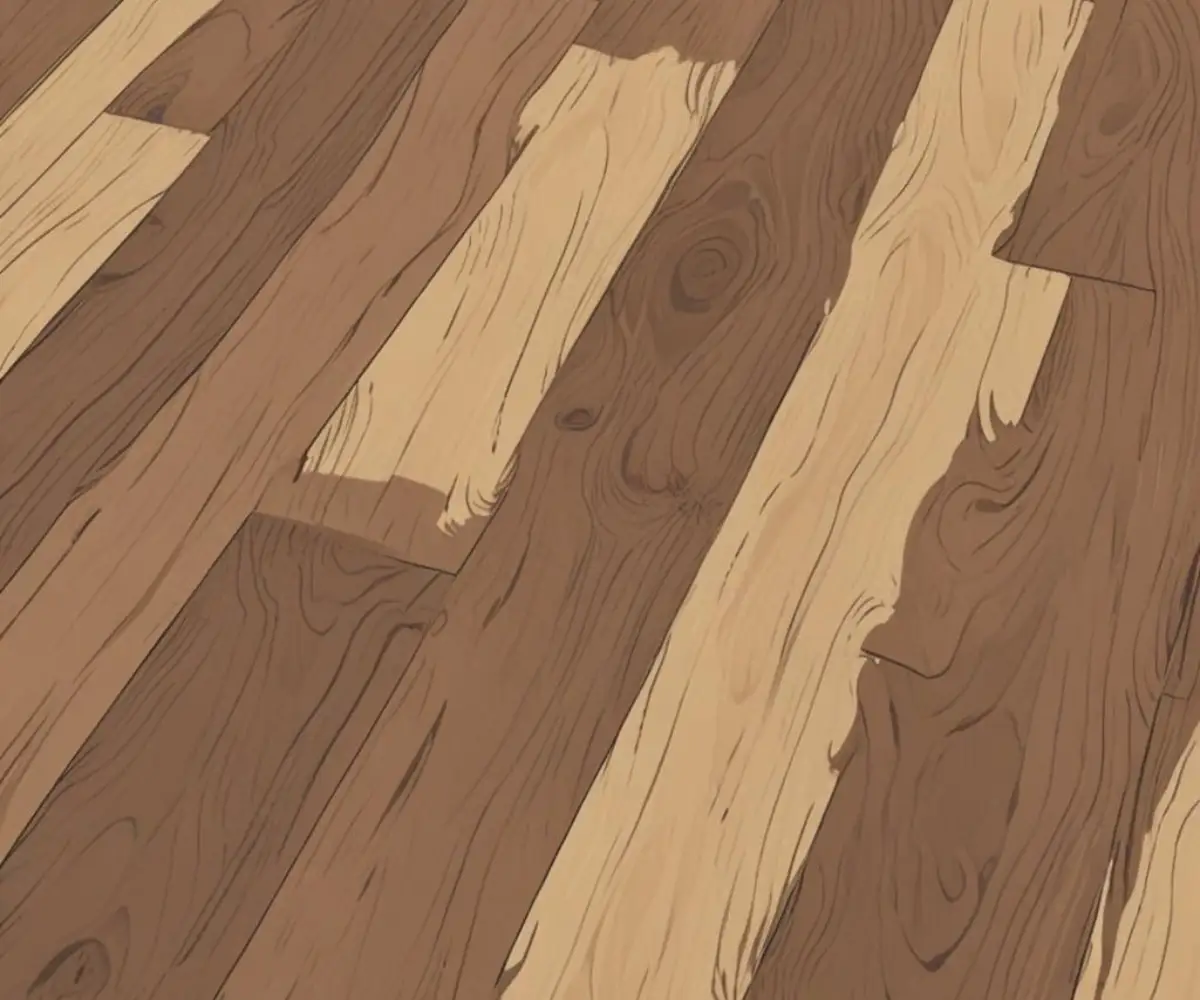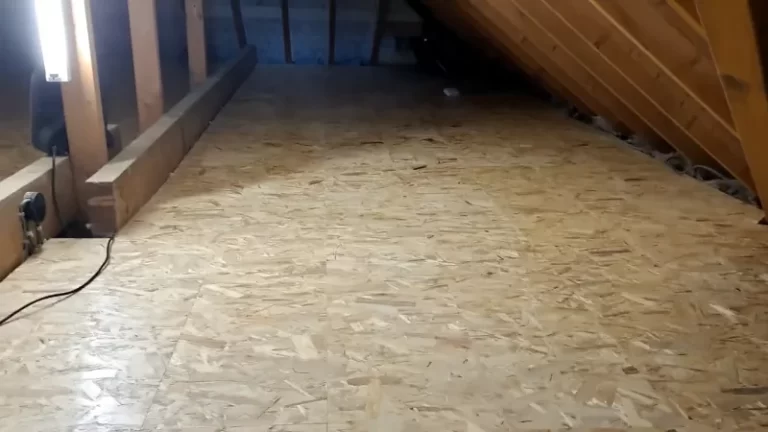Is Vinyl Plank Flooring Forgiving? The Surprising Truth
You’ve chosen vinyl plank flooring for its durability and stunning wood look. But as you prepare for installation, a nagging fear creeps in: what if my subfloor isn’t perfect? How forgiving is vinyl plank flooring, really?
This is a major pain point for DIYers and homeowners alike. The dream of a flawless new floor can quickly turn into a nightmare of gaps, peaks, and clicking sounds if the surface underneath isn’t properly prepared. The truth is, while vinyl plank is resilient, it’s not magic; it can’t completely mask significant subfloor issues.
You'll Learn About
Why Subfloor Imperfections Spell Disaster for Vinyl Plank
Vinyl plank flooring, especially the popular “floating” or “click-lock” style, relies on a smooth, flat foundation to maintain its structural integrity. When the subfloor has hills and valleys, it creates a host of problems that compromise the entire installation.
An uneven surface prevents the plank locking mechanisms from engaging properly, leading to separation and unsightly gaps. Furthermore, high spots create pressure points that can cause the planks to warp or crack over time, while low spots can result in a “bouncy” or soft feeling underfoot, eventually damaging the joints. Think of it as building a house on a shaky foundation—it’s only a matter of time before problems appear.

The “Forgiveness” Threshold: How Flat is Flat Enough?
So, how much imperfection can vinyl plank flooring handle? Most manufacturers specify a tolerance for subfloor flatness, which is typically no more than a 3/16 inch variance over a 10-foot span. Anything more than this, and you’re venturing into risky territory.
Running a long straightedge or level across your subfloor is the best way to identify any high or low spots that exceed this limit. Ignoring these specifications is a common mistake that can void your warranty and lead to a failed installation. While some thicker, rigid core vinyl planks offer slightly more forgiveness, they are not a substitute for proper subfloor preparation.
Common Installation Mistakes That Reduce Forgiveness
Beyond an uneven subfloor, several other installation errors can undermine the forgiving nature of vinyl plank flooring. Even with a perfectly flat surface, these missteps can lead to a less-than-perfect result.
One of the most frequent blunders is failing to leave an adequate expansion gap around the perimeter of the room. Vinyl flooring, like many materials, expands and contracts with temperature and humidity changes. Without a gap of about 1/4 inch, the planks can buckle or peak as they push against the walls.
Another critical error is improper staggering of the seams. The end joints of planks in adjacent rows should be offset to create a more natural look and enhance structural stability. Failing to stagger the seams correctly can result in a weak, unstable floor that is more prone to separation.
The Perils of an Unsuitable Base
Attempting to install vinyl plank over an inappropriate existing floor is another path to problems. While it can be laid over some surfaces like concrete or existing vinyl, it should never be installed over soft or unstable materials like carpet. This can cause the planks to flex and the locking systems to fail.
Even when installing over a suitable surface, proper preparation is key. Old adhesive residue, for instance, must be completely removed. If you’re considering this, understanding the risks of installing vinyl plank flooring over old glue is essential to avoid a sticky situation.
Achieving a Flawless Finish: Solutions for an Imperfect World
Now for the good news: achieving a subfloor that’s ready for vinyl plank is entirely possible. The key is to address imperfections before you lay the first plank. This proactive approach is far easier than trying to fix problems after the fact.
For minor imperfections, a quality underlayment can help smooth things over and provide an extra layer of moisture protection and sound dampening. However, for more significant dips and valleys, a self-leveling compound is your best friend. This product is poured over the subfloor and spreads out to create a perfectly flat and smooth surface.
Tackling High Spots and Ensuring a Solid Base
If your subfloor has high spots, they’ll need to be sanded or ground down. This is especially common with concrete subfloors. For wooden subfloors, you may need to nail down any loose boards or replace damaged sections to ensure a solid, squeak-free foundation.
Occasionally, you might encounter a persistent issue like a soft spot under your new floor. This often indicates a deeper subfloor problem that needs to be addressed. Learning how to fix a soft spot in vinyl plank flooring can save you from bigger headaches down the road.
Long-Term Forgiveness: How Vinyl Plank Holds Up to Daily Life
Beyond installation, the “forgiveness” of vinyl plank flooring extends to its remarkable durability and ease of maintenance in the face of everyday challenges. This is where this flooring material truly shines and offers peace of mind, especially for busy households with children and pets.
One of the most celebrated features of vinyl plank is its high resistance to water and moisture. Unlike traditional hardwood, which can warp and stain when exposed to spills, high-quality vinyl plank is virtually waterproof. This makes it an incredibly forgiving choice for moisture-prone areas like kitchens, bathrooms, and basements.
Resilience Against Scratches and Dents
Daily life involves dropped toys, dragged furniture, and the click-clack of pet nails. Vinyl plank flooring is built to withstand this abuse. Its protective wear layer is designed to resist scratches, scuffs, and dents, making it a forgiving option for high-traffic areas.
While no floor is completely indestructible, the robust nature of vinyl plank means you won’t have to constantly worry about minor mishaps ruining its appearance. This durability is a key factor when homeowners are deciding whether to refinish hardwood or install vinyl, as vinyl often presents a more worry-free solution for active families.
| Type of Imperfection | Forgiveness Level | Recommended Solution |
|---|---|---|
| Minor Subfloor Unevenness (< 3/16″ over 10 ft) | Moderately Forgiving | High-quality underlayment; rigid core LVP can help. |
| Significant Subfloor Unevenness (> 3/16″ over 10 ft) | Not Forgiving | Use self-leveling compound for low spots; grind down high spots. |
| Water and Spills | Very Forgiving | Wipe up spills as they happen; 100% waterproof core is ideal. |
| Scratches and Scuffs | Very Forgiving | Choose a thick wear layer (20 mil+ for high traffic). Use furniture pads. |
| Installation Errors (e.g., no expansion gap) | Not Forgiving | Follow manufacturer instructions precisely; leave a 1/4″ expansion gap. |
The Final Verdict: Forgiving, But Not Foolproof
So, how forgiving is vinyl plank flooring? When it comes to daily life—spills, traffic, and minor impacts—it’s one of the most forgiving flooring options on the market. Its durability and low-maintenance nature make it a practical and beautiful choice for almost any room.
However, when it comes to installation, its forgiveness has its limits. The success of your vinyl plank floor is directly tied to the quality of your subfloor preparation. While it can handle minor imperfections, ignoring significant issues is a recipe for disaster. By taking the time to properly level and prepare your subfloor, you ensure that your vinyl plank flooring can live up to its forgiving reputation for years to come.
Frequently Asked Questions
Is vinyl plank flooring waterproof?
Most vinyl plank flooring is highly water-resistant, and many options are fully waterproof. This makes it a great choice for moisture-prone areas like kitchens, bathrooms, and basements. Always check the product specifications to understand the level of water resistance, as some types handle prolonged water exposure better than others.
How scratch and dent resistant is vinyl plank flooring?
Vinyl plank flooring is designed to be durable and resistant to scratches and dents from daily wear, making it a good option for homes with pets and children. A protective wear layer helps guard against scuffs and minor scratches. While it is resilient, it’s not completely immune to damage from very sharp objects or heavy furniture.
Does vinyl plank flooring require a perfectly flat subfloor?
While vinyl plank flooring can be more forgiving than materials like hardwood or tile, it still requires a relatively flat subfloor for the best results. Significant imperfections in the subfloor can cause the planks to warp, crack, or separate over time. Most manufacturers specify a tolerance for subfloor evenness, often around 3/16 of an inch over a 10-foot span.
Is vinyl plank flooring a good choice for a DIY installation?
Yes, vinyl plank flooring is often considered a DIY-friendly product due to its easy-to-use click-lock installation system. The planks are relatively simple to cut and snap together, making it a manageable project for many homeowners. Proper subfloor preparation and leaving an expansion gap are crucial for a successful installation.

